Table of contents
Browse categories
Browse authors
 AB
ABAlberto Boffi
 AL
ALAlessia Longo
 AH
AHAl Hoge
 AB
ABAljaž Blažun
 BJ
BJBernard Jerman
 BČ
BČBojan Čontala
 CF
CFCarsten Frederiksen
 CS
CSCarsten Stjernfelt
 DC
DCDaniel Colmenares
 DF
DFDino Florjančič
 EB
EBEmanuele Burgognoni
 EK
EKEva Kalšek
 FB
FBFranck Beranger
 GR
GRGabriele Ribichini
Glacier Chen
 GS
GSGrant Maloy Smith
 HB
HBHelmut Behmüller
 IB
IBIza Burnik
 JO
JOJaka Ogorevc
 JR
JRJake Rosenthal
 JS
JSJernej Sirk
 JM
JMJohn Miller
 KM
KMKarla Yera Morales
 KD
KDKayla Day
 KS
KSKonrad Schweiger
Leslie Wang
 LS
LSLoïc Siret
 LJ
LJLuka Jerman
 MB
MBMarco Behmer
 MR
MRMarco Ribichini
 ML
MLMatic Lebar
 MS
MSMatjaž Strniša
 ME
MEMatthew Engquist
 ME
MEMichael Elmerick
 NP
NPNicolas Phan
 OM
OMOwen Maginity
 PF
PFPatrick Fu
 PR
PRPrimož Rome
 RM
RMRok Mesar
 RS
RSRupert Schwarz
 SA
SASamuele Ardizio
 SK
SKSimon Kodrič
 SG
SGSøren Linnet Gjelstrup
 TH
THThorsten Hartleb
 TV
TVTirin Varghese
 UK
UKUrban Kuhar
Valentino Pagliara
 VS
VSVid Selič
 WK
WKWill Kooiker
Monitoring the Durability of Timber Gantry

Institute of Timber Engineering and Wood Technology (LIGNUM), Graz University of Technology
November 21, 2024
‘Green’ sign gantries on highways are the concept of a joint Austrian business and research project to reduce the carbon footprint. In the Green Gantry Project, the structure of combined timber, metal, and adhesive materials, exposed to wind and weather, is now tested to ensure strength and durability. Dewesoft helped measure strains and the resulting forces within the structure.
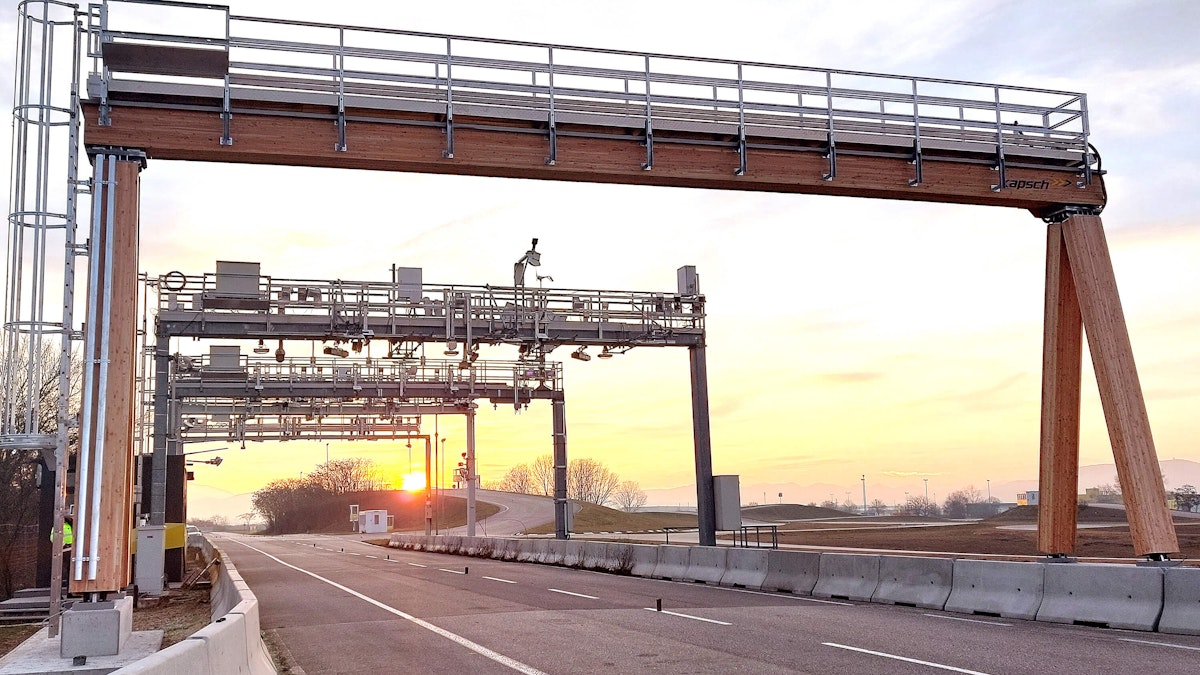
Everyone knows the grey gantries on the highway. Usually made of steel, the gantries carry signs, displays, cameras, or sensors. Kapsch TrafficCom and the Institute of Timber Engineering and Wood Technology at Graz University of Technology have now developed a ‘Green Gantry’ made of timber to reduce these gantries' carbon footprint.
Lignum test center (LTC)
Kapsch TrafficCom is hosting the project and taking care of the technical equipment in general. Funded by the Waldfonds, an initiative of the Austrian Federal Ministry of Agriculture, Forestry, Regions, and Water Management, the project runs for three years. It is part of the Austrian Wood initiative’s ‘Think.Wood program’ including the research partners:
The Institute of Timber Engineering and Wood Technology (LIGNUM, Graz University of Technology)
The HASSLACHER Group, and
Denkstatt GmbH.
The Graz University of Technology’s Lignum Test Center (LTC) took over the task of equipping the wooden prototype with sensors and installing a Dewesoft monitoring system.
Materials long-term Interaction
Within the research project, two major scientific topics are of interest:
Material fatigue: Wind and traffic induce dynamic loads on the structure. Concerning timber engineering, a knowledge gap is present in the material fatigue field, especially for connections.
Moisture-induced stresses: Moisture can cause stresses in timber through swelling and shrinking. These stresses become more pronounced when metal fasteners restrict the deformation. In extreme cases, the resulting stresses lead to cracks in the wood and can potentially even lead to the yielding of the metal fastener.
Monitoring setup
Long-term monitoring was necessary to underline the theoretical modelling within the research project with proper data. For this, TU Graz needed data acquisition equipment:
SIRIUSi-HD-16xSTGS - universal data acquisition module with USB interface and internal quarter/half bridge completions for measuring strain gages
2 x DEWE-43A - universal data acquisition module with USB interface, TU Graz had the bridge completions done externally
Sync cables - to ensure all modules are running with the same clock - learn more about synchronization here
DewesoftX software - measurement and analysis software package included with the hardware; software updates are free
the triggered storing options were beneficial for this project

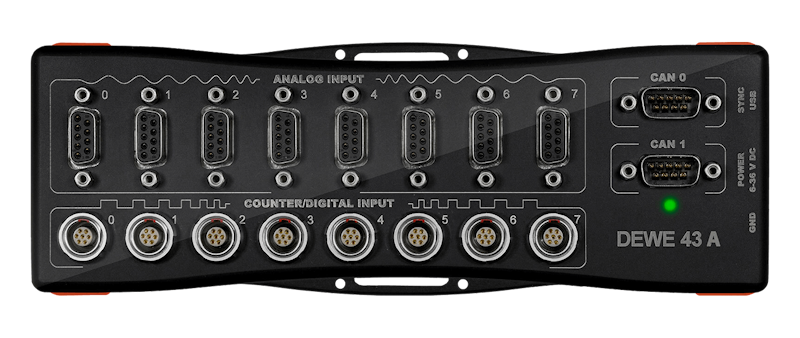
TU Graz was in the project from the beginning. Already in production, the team divided the timber beam into three parts to embed the sensors in three different depths from the surface: 60, 120, and 240 mm. After the sensor application, the parts were block-glued to the final cross-section.
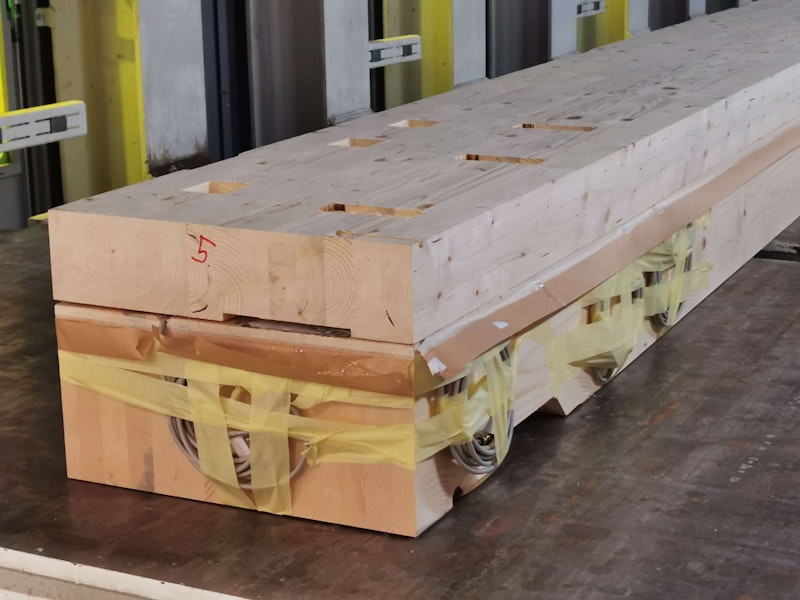
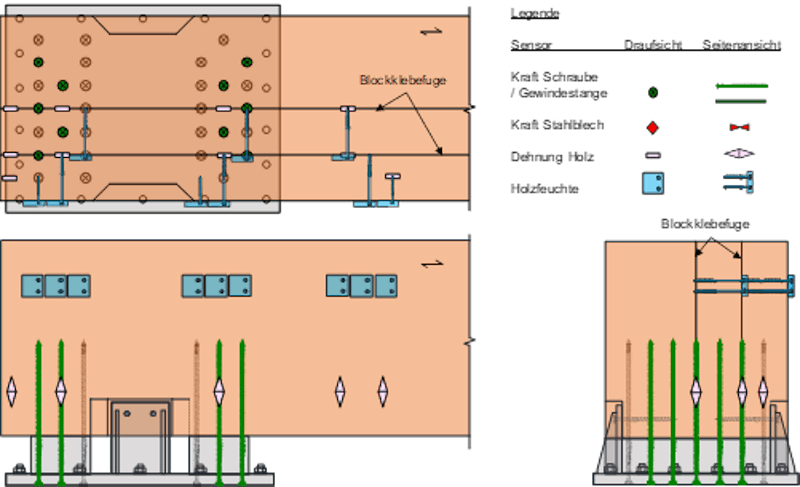
The team mounted most sensors within the beam’s cross-section, mainly in the frame corner and some in one of the columns, resulting in cable lengths of around 5 to 10 meters per sensor. For proper cable routing, it milled slots into the timber. The strain gauges were sealed with a specific rubber to protect against humidity. Eleven humidity sensors were mounted in the three different and previously mentioned depths to measure the moisture content of the timber.
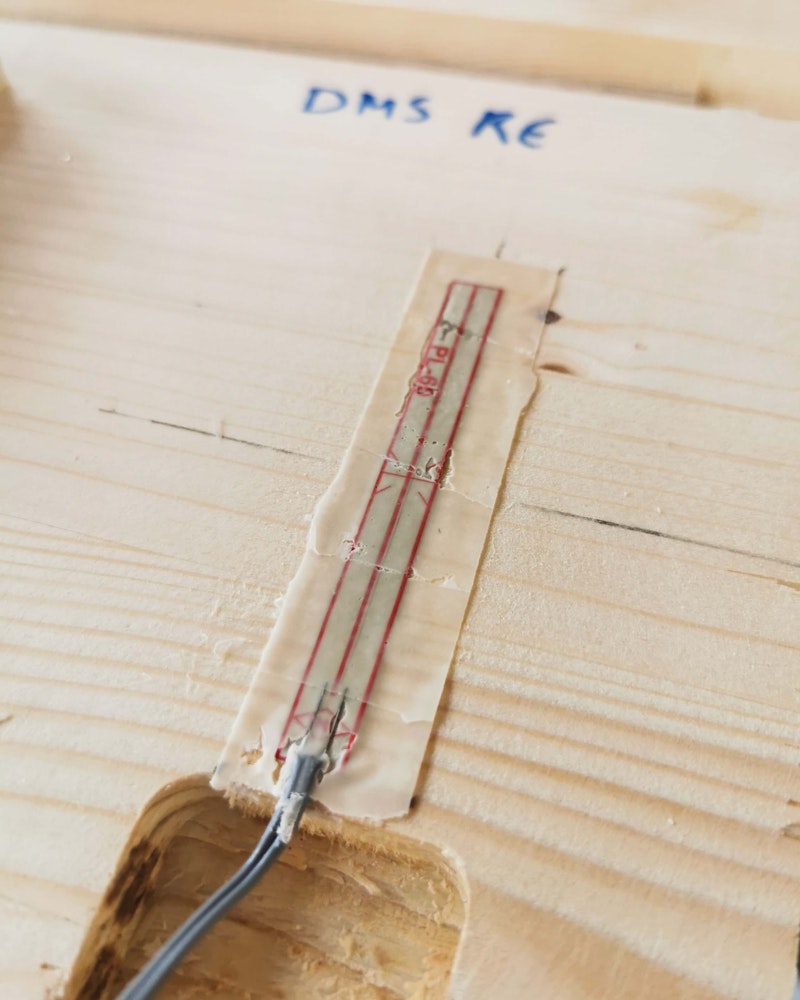
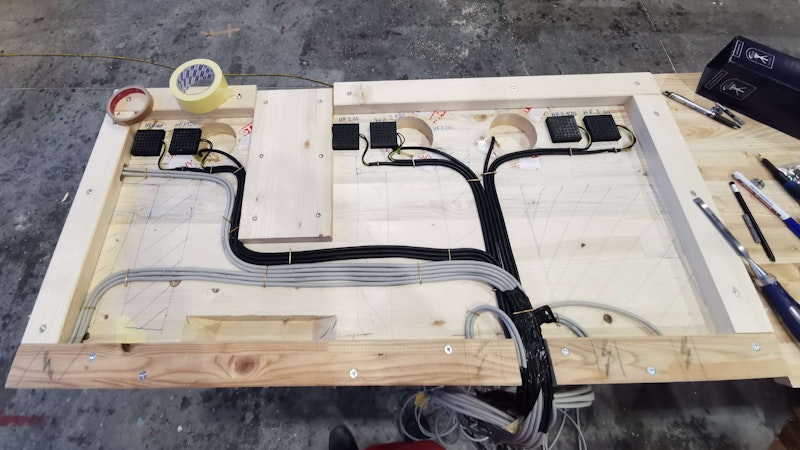
To monitor the forces inside the structure, for accuracy reasons, the engineers preferred to measure in the steel parts because the stiffnesses of timber scatter too much. Therefore, they had to instrument the screws and threaded rods.
First, the team drilled a hole with a 2mm diameter into the high-strength steel. Then, it mounted the half-bridge strain gauges connected by the 5-wire method and glued inside with two-component epoxy glue. Additionally, it spot-welded a washer, holding the electrical connector on top of the screws - carefully because too high-temperature for a longer time causes the screws to lose strength.
The team calibrated the output signal to measure values up to 20 kN for the screws and 80 kN for the threaded rods.
Mr. David Glasner comments on the process: “Although I am a trained civil engineer, I felt more like an electrician during the work.”.
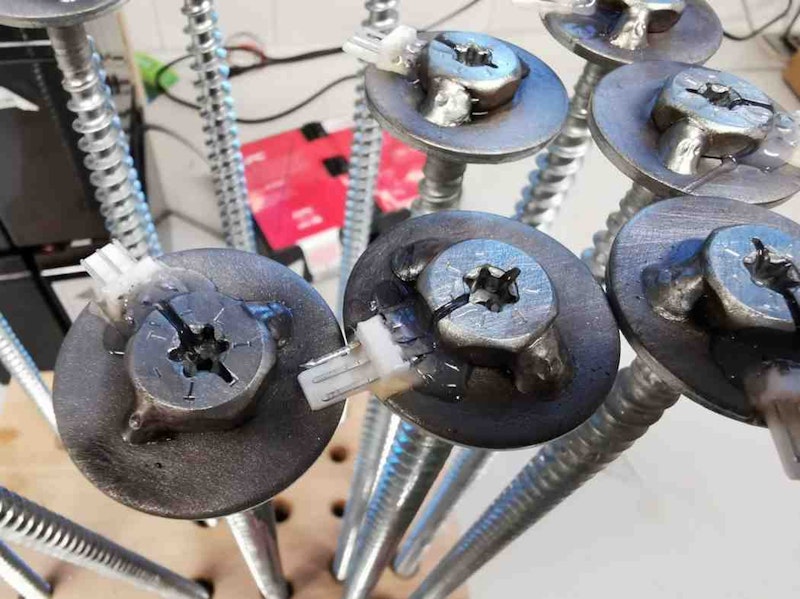
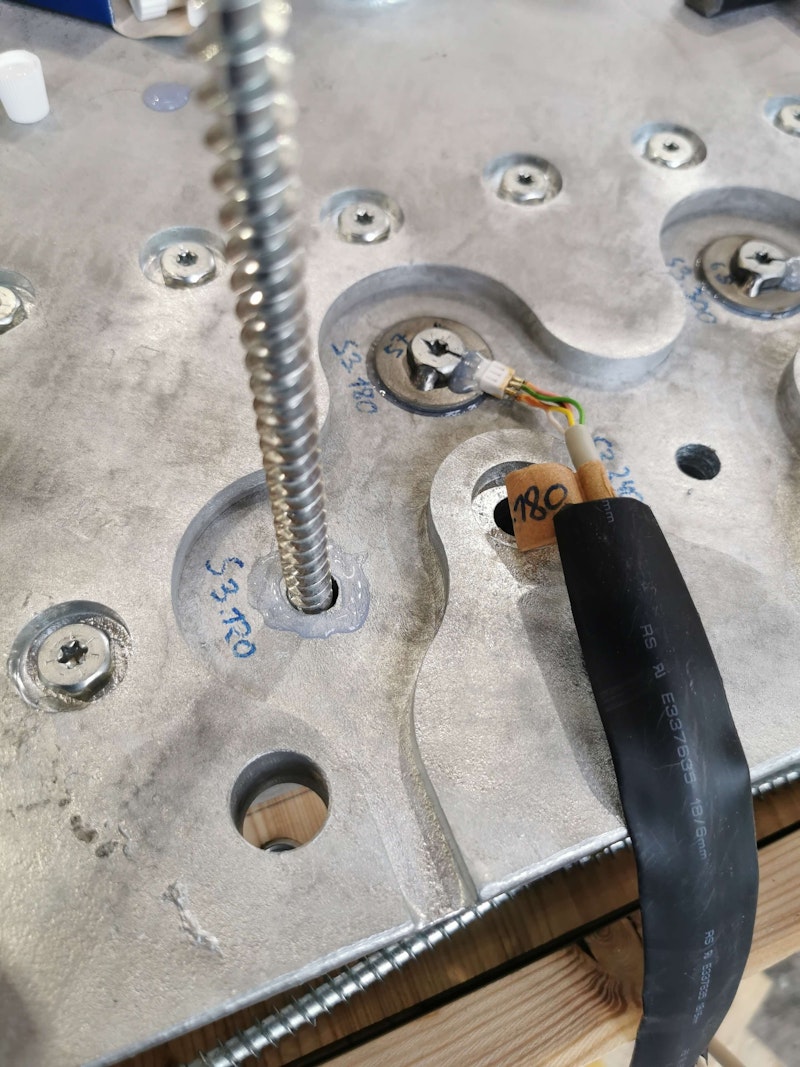
A critical step in the construction manufacturing was the block-gluing: the team added the adhesive, combined the two halves precisely over each other, and everything went into the big block-gluing press. Luckily, all the sensors were still working afterwards.
For the measurement of outside temperature, air humidity, and wind speed, the engineers decided to use a weather station. It provides serial output, which the Dewesoft SerialCOM plugin can decode, so all data is synchronously measured by DewesoftX software - see the DewesoftX manual.
The data acquisition system has 32 channels and contains one SIRIUSi-HD-16xSTGS and two DEWE-43 measurement devices. The devices connect to a computer with an independent power supply and network connection for remote monitoring - all installed and fitted nicely within a control cabinet.
Conclusion
The needed sampling rate is low for long-term monitoring. However, TU Graz uses the “slow storing” feature, storing min, max, average, and RMS values to reduce the data file size even more. Every day, the system automatically creates a new file for easy traceability.
DI David Glasner, assistant of the Institute, is satisfied with the measurement system. Mr Glasner also liked the measurement modules’ DSUB9 connectors for the analog inputs, which are much easier to solder than others.
With the 16-channel SIRIUS, he adds a practical remark: “Users must pay attention to using the slim variant of the DSUB9 housings if they prepare their cables upfront.” However, he is still happy with the compact form factor of the measurement module.
His main concern was the embedded sensors: Would the instrumented screws and rods work as expected? Luckily, they did.
By applying a monitoring system, TU Graz ensures the gantry functionality and can use the data to validate their engineering models. The first year has now passed. The measurements show the ‘green’ gantry is all good. Unexpectedly, the engineers have observed a slight drying of the inner core, which they ascribe to the constructive wood protection.